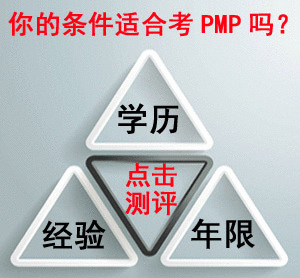PMP考试题及参考答案(33)
|
1 The Cost Performance Index (CPI) measures A total costs B performance over a period of time C costs at a point of time D variable costs E All of the above. ans:C 2 Parametric cost estimating involves A using the WBS to do bottom up estimates B defining the perimeters of the life-cycle C calculating the individual estimates of work packages D using a statistical model to estimate costs E A and C ans:D 3 Which of the statements regarding benefit-cost analysis in the Special window are true? A 1 and 2 B 2 and 3 C 1 and 3 D 1, 2 and 3 E None of the above. ans:C 4 Present value measures A the value to us today of future cash flows. B the rate of return on an investment when we take account of cash inflows and outflows C the current estimates of our project budget D the dollars worth of work accomplished as of today E All of the above. ans:A 5 Using the situation stated in the Special window, what is the cost performance index for Case #9? A 1.1 B 1.91 C 0.83 D 1.2 E None of the above ans:A 6 Sunk costs are: A future costs held in reserve. B costs invested in commodities. C expended costs over which we have no control. D expended costs over which we have no more control E tax credits ans:D 7 Managerial Reserves are: A allowances to account for price changes that can occur over the life of a project. B incentive fees paid to managers for good performance. C funds used to offset poor cost or schedule estimates. D accounts to allocate and maintain funds for contingency programs E All of the above. ans:D 8 Life Cycle Costing: A is the concept of including all costs within the total life of a project. B is an activity devoted to optimizing cost/performance C is an activity of appraising the cost and technical performance of a completed project. D is a process of predicting the life of a project. E None of the above. ans:A 9 Using the situation stated in the Special window, what is the schedule variance for Case #8? A 1000 B 2000 C -1000 D -2000 E 0 ans:C 10 Using the situation stated in the Special window, what is the cost variance for Case #9? A $-1,000 B $1,000 C -2000 D 2000 ans:B 11 Using the situation stated in the Special window, what is present value of $1000 at 12% at the end of 5 years? A $3,605.00 B $0.57 C $567.00 D $892.86 E $3.61 ans:C 12 Using the situation stated in the Special window, what is net present value of an annual income flow of $1600 at 14% over the next three years? A $3,713.60 B $0.68 C $1,080.00 D $476.19 E $2.32 ans:A 13 Using the situation stated in the Special window, what is the labor rate cost variance? A $5,500.00 B $1,500.00 C $-100.00 D $-0.10 E $5,600.00 ans:D 14 Using the situation stated in the Special window, what is the total price variance for direct material? A $140.00 B $736.00 C $0.02 D $-350.00 E $5,850.00 ans:B 15 Using the situation stated in the Special window, what is the total variable costs for producing one widget? A $1,020 B $1,010 C $1,015 D $20 E None of the above. ans:E 16 A technique that can be used to measure the total income of a project compared to the total moneys expended at any period of time is: A return on investment (ROI) B net present value (NPV) C discounted cash flow (DCF) D B and C E All of the above. ans:E 17 Cost management includes processes that are required to maintain financial control of projects. These processes may include: A economic evaluation B cost estimating C cost forecasting D B and C E All of the above. ans:E 18 Which of the following is considered a method of accelerated depreciation: A sum-of-the-years digit B straight-line C double-declining-balance D A and C E All of the above. ans:D 19 The Cost Performance Index is computed as: A budget cost of work performed divided by actual cost of work performed B budget cost of work performed minus actual cost of work performed C budget cost of work performed minus budget cost of work scheduled D budget cost of work scheduled divided by budget cost of work performed E actual cost of work scheduled divided by budget cost of work performed ans:A 20 A budget estimate should give the manager cost data accurate to within: A -5 to +10 percent of actual cost B -25 to +75 percent of actual cost C -30 to +75 percent of actual cost D -10 to +25 percent of actual cost E None of the above ans:D |




